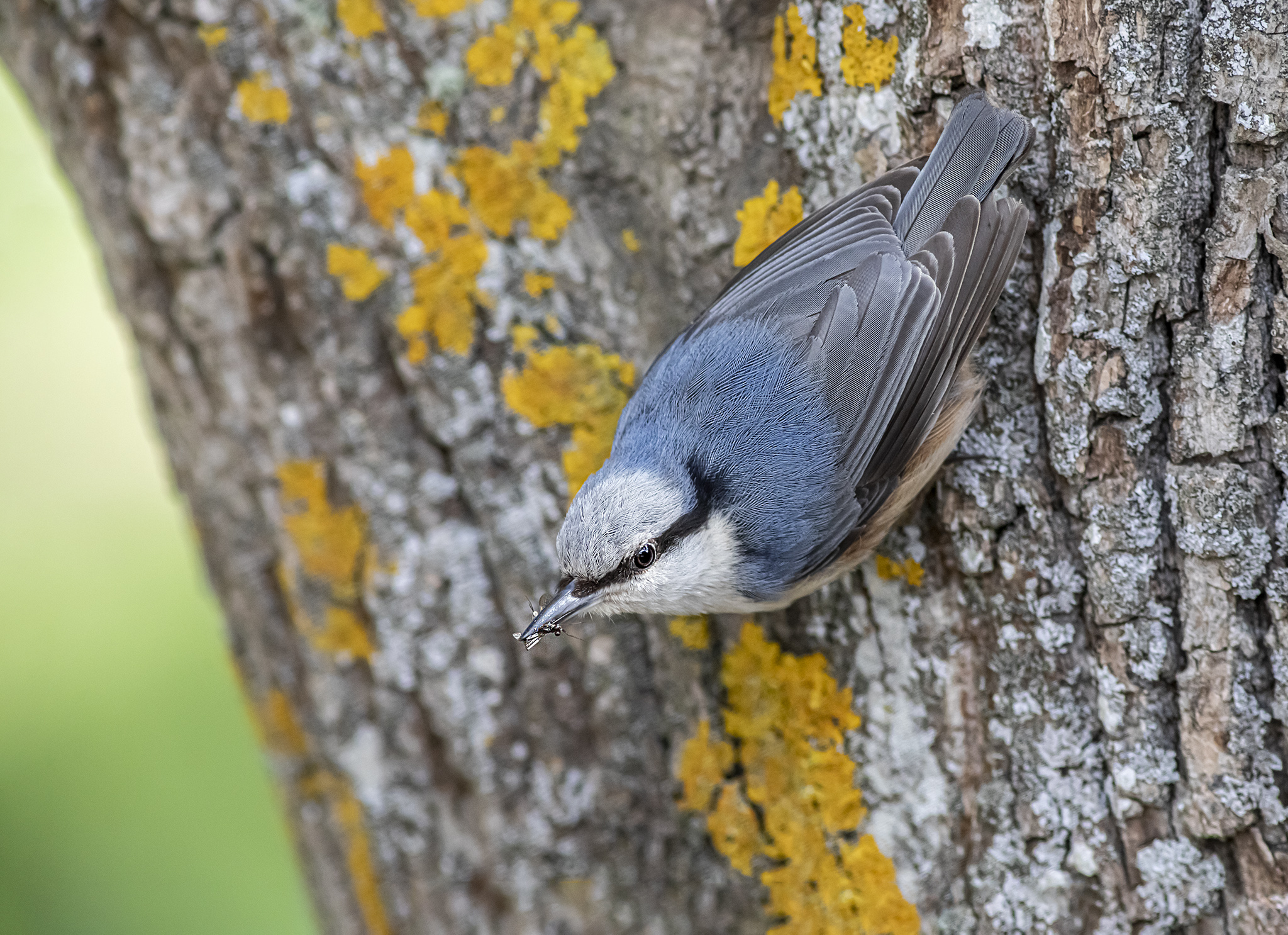Eurasian Nuthatch (Sitta europaea) Overview
The Eurasian Nuthatch (Sitta europaea) is a small, agile songbird known for its unique ability to climb both up and down tree trunks headfirst. Found throughout Europe and parts of Asia, it is a common woodland bird that feeds on insects and seeds.
General Information:
- Scientific Name: Sitta europaea
- Common Name: Eurasian Nuthatch
- Family: Sittidae (Nuthatches)
- Size:
- Length: 12–14 cm (4.7–5.5 inches)
- Wingspan: 22–27 cm (8.7–10.6 inches)
- Weight: 17–28 g (0.6–1.0 oz)
- Lifespan: Typically 2–3 years, though some reach 10 years
Appearance & Identification:
- Plumage:
- Upperparts: Blue-grey
- Underparts: Buff, orange, or white (varies by subspecies)
- Distinctive black eye stripe running from the beak to the nape
- Beak: Long, pointed, and slightly curved—ideal for cracking seeds and probing bark
- Legs & Feet: Strong, with sharp claws for gripping tree bark
Distribution & Habitat:
- Found across Europe, Russia, and parts of Asia
- Prefers deciduous and mixed forests, but also seen in parks and gardens
- Requires mature trees for nesting and foraging
Behavior & Ecology:
- Climbing & Foraging:
- Unlike woodpeckers, nuthatches climb headfirst down trees
- Uses its sharp beak to pry insects and larvae from bark
- Calls & Sounds:
- Loud, whistling “twit-twit” or “pee-pee-pee” call
- Song varies by region but is typically fast and melodic
- Territorial & Monogamous:
- Defends feeding and nesting areas aggressively
- Forms lifelong pair bonds
Diet & Feeding:
- Primarily insectivorous in summer, feeding on beetles, caterpillars, and spiders
- In autumn and winter, switches to seeds and nuts (often caches food for later)
- Often seen at bird feeders, especially attracted to sunflower seeds and peanuts
Nesting & Reproduction:
- Nest Location:
- Uses natural tree holes or abandoned woodpecker nests
- Sometimes plasters mud around the entrance to make it smaller (to deter predators)
- Breeding Season: April to June
- Clutch Size: 6–9 eggs, incubated by the female for 14–18 days
- Fledging: Young leave the nest after 21–26 days
Predators & Threats:
- Predators:
- Birds of prey (e.g., sparrowhawks)
- Nest predators like woodpeckers and squirrels
- Threats:
- Habitat loss due to deforestation
- Competition for nest sites from invasive species
Conservation Status:
- IUCN Red List: Least Concern (LC)—populations are stable
- Conservation Efforts:
- Nest box programs help maintain populations in human-modified areas
- Protecting old-growth forests is key for long-term survival
Interesting Facts:
- The Eurasian Nuthatch is one of the few birds that can descend trees headfirst
- It hoards food in bark crevices during autumn for winter survival
- Some regional variations exist, with different underpart colors across its range
Would you like tips on attracting nuthatches to your garden or more details on their vocalizations? 😊🐦
Visited 873 times, 3 visit(s) today
Views: 1306
Subscribe to the newsletter:
